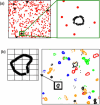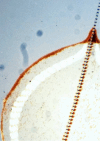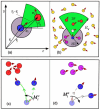The 2025 motile active matter roadmap
- PMID: 39837091
- PMCID: PMC11836640
- DOI: 10.1088/1361-648X/adac98
The 2025 motile active matter roadmap
Abstract
Activity and autonomous motion are fundamental aspects of many living and engineering systems. Here, the scale of biological agents covers a wide range, from nanomotors, cytoskeleton, and cells, to insects, fish, birds, and people. Inspired by biological active systems, various types of autonomous synthetic nano- and micromachines have been designed, which provide the basis for multifunctional, highly responsive, intelligent active materials. A major challenge for understanding and designing active matter is their inherent non-equilibrium nature due to persistent energy consumption, which invalidates equilibrium concepts such as free energy, detailed balance, and time-reversal symmetry. Furthermore, interactions in ensembles of active agents are often non-additive and non-reciprocal. An important aspect of biological agents is their ability to sense the environment, process this information, and adjust their motion accordingly. It is an important goal for the engineering of micro-robotic systems to achieve similar functionality. Many fundamental properties of motile active matter are by now reasonably well understood and under control. Thus, the ground is now prepared for the study of physical aspects and mechanisms of motion in complex environments, the behavior of systems with new physical features like chirality, the development of novel micromachines and microbots, the emergent collective behavior and swarming of intelligent self-propelled particles, and particular features of microbial systems. The vast complexity of phenomena and mechanisms involved in the self-organization and dynamics of motile active matter poses major challenges, which can only be addressed by a truly interdisciplinary effort involving scientists from biology, chemistry, ecology, engineering, mathematics, and physics. The 2025 motile active matter roadmap of Journal of Physics: Condensed Matter reviews the current state of the art of the field and provides guidance for further progress in this fascinating research area.
Keywords: active matter; intelligent matter; microbots; microswimmers; non-equilibrium systems; non-reciprocal interactions; swarming.
Creative Commons Attribution license.
Figures





























References
-
- Gray J, Hancock G J. The propulsion of sea-urchin spermatozoa. J. Exp. Biol. 1955;32:802–14. doi: 10.1242/jeb.32.4.802. - DOI
-
- Purcell E M. Life at low Reynolds number. Am. J. Phys. 1977;45:3–11. doi: 10.1119/1.10903. - DOI
-
- Ramaswamy S. The mechanics and statistics of active matter. Annu. Rev. Condens. Matter Phys. 2010;1:323–45. doi: 10.1146/annurev-conmatphys-070909-104101. - DOI
